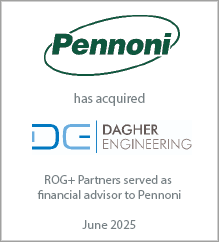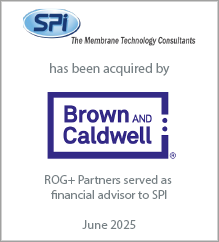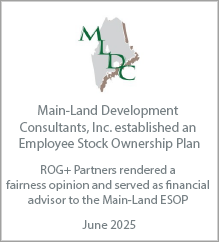For guidance on this, we turned to Robert Sher who is the founding principal of CEO to CEO, a consulting firm of former chief executives that improves the leadership infrastructure of midsized companies, including professional services firms. He has seen many effective CEO successions, but also instances where the wrong candidate, executive suite procrastination, or failure to mentor rising stars leads to setbacks and the inability to achieve peak company performance.
Passing the Torch – Succession Planning Fundamentals for A/E Firms
October 15, 2018
With a huge number of baby boomer leaders preparing to retire, we are witnessing the next generation of industry CEOs being promoted to lead their firms. In fact almost every week we see press releases showcasing new A/E CEOs taking the reins from their predecessors—the evolutionary process often touted in a seamless and deliberate manner.
Unfortunately not every organization is prepared for this transition. Whether it’s the founders’ desire to hold on for control or ego reasons or simply a lack of developed bench strength, we find many A/E firms struggle with succession planning. Failure to prepare for the next leader can create lingering concerns for clients and staff and be outright debilitating if there’s a tragic or unexpected event.
Unfortunately not every organization is prepared for this transition. Whether it’s the founders’ desire to hold on for control or ego reasons or simply a lack of developed bench strength, we find many A/E firms struggle with succession planning. Failure to prepare for the next leader can create lingering concerns for clients and staff and be outright debilitating if there’s a tragic or unexpected event.
Why should A/E firms have a formal succession plan?
Unfortunately, we never know when our time will come, either from illness or other life surprises or circumstances. Continuity of leadership is critical. A void in leadership leaves a firm at risk, invites infighting and a power struggle, and should rightly worry clients and staff who will look for alternatives. The stronger the current leader, the more his or her absence will be felt.
Who is typically responsible for developing and implementing a CEO succession planning process?
In emerging midsized firms it is most often the CEO, who is often an owner as well. CEO succession is a piece of a larger leadership succession challenge. Every leader should have a successor in place or in development. For those firms with a board, the board should require the CEO to have a viable successor and should keep up the pressure until this is accomplished. Boards protect the interest of the owners, and not having a successor is a big risk.
In the case of an environmental consulting client, the CEO had planned carefully for succession. In addition to life insurance and setting up an ESOP, he hired a talented individual and groomed him as his successor. When the CEO had to withdraw from the business due to illness, this person stepped up, and together with other senior leaders, kept the company running and growing without any interruption, and today serves as its CEO.
When should CEOs start forming a succession plan?
They should have a succession plan as soon as they pass the startup phase. That is, unless their CEO is immortal and irrevocably enslaved as CEO of that company! Everybody is at risk for dying, including young CEOs. And any CEO can blow it (ethically or otherwise) and have to walk away, or have to tend to family matters. Maybe even more importantly, many, many AE firms are short of leadership altogether. People join the firms based on professional aspirations, not business or leadership aspirations. Having many people developing as leaders and businesspeople give such firms the capacity to keep growing. Being prepared for succession can almost seem like a secondary benefit.
What are some of the characteristics and capabilities CEOs should look for with internal candidates?
There are several I would emphasize, including: a love of leadership and business; strong emotional intelligence and good followership in the organization; excellent judgement; and proven success in leading projects or lesser management duties.
Under what conditions should a board consider an outsider as CEO?
Under all conditions. Every company deserves the BEST CEO they can attract. Being an insider does have considerable benefits, but those could be outweighed by an outside candidate. As the time nears for the new leader to step into the CEO seat, a short list must be developed. That might include many insiders but should also include outsiders in the firm’s network who would likely fit the culture and bring powerful skills, experience, and perhaps fresh eyes to the firm. Firms who only have weak internal candidates should absolutely search aggressively on the outside, and get help doing it. There are many wonderful people outside your company that could lead it well!
Based on your experiences, what are a few common misconceptions about succession planning?
There are several including that simply having a few names on a piece of paper titled, “Succession Planning” means that’s all you need to do. Another is that possible succession candidates should be kept in the dark, lest they desire the position immediately. I also see a belief that succession doesn’t require clarity and commitment as to the date when the new CEO will start (when the incumbent plans to retire). Finally, that the CEO who relinquishes the seat must go off into a corner to die. Many former CEOs in A/E firms can have new roles in the business and contribute in a myriad of ways.
Unfortunately, we never know when our time will come, either from illness or other life surprises or circumstances. Continuity of leadership is critical. A void in leadership leaves a firm at risk, invites infighting and a power struggle, and should rightly worry clients and staff who will look for alternatives. The stronger the current leader, the more his or her absence will be felt.
Who is typically responsible for developing and implementing a CEO succession planning process?
In emerging midsized firms it is most often the CEO, who is often an owner as well. CEO succession is a piece of a larger leadership succession challenge. Every leader should have a successor in place or in development. For those firms with a board, the board should require the CEO to have a viable successor and should keep up the pressure until this is accomplished. Boards protect the interest of the owners, and not having a successor is a big risk.
In the case of an environmental consulting client, the CEO had planned carefully for succession. In addition to life insurance and setting up an ESOP, he hired a talented individual and groomed him as his successor. When the CEO had to withdraw from the business due to illness, this person stepped up, and together with other senior leaders, kept the company running and growing without any interruption, and today serves as its CEO.
When should CEOs start forming a succession plan?
They should have a succession plan as soon as they pass the startup phase. That is, unless their CEO is immortal and irrevocably enslaved as CEO of that company! Everybody is at risk for dying, including young CEOs. And any CEO can blow it (ethically or otherwise) and have to walk away, or have to tend to family matters. Maybe even more importantly, many, many AE firms are short of leadership altogether. People join the firms based on professional aspirations, not business or leadership aspirations. Having many people developing as leaders and businesspeople give such firms the capacity to keep growing. Being prepared for succession can almost seem like a secondary benefit.
What are some of the characteristics and capabilities CEOs should look for with internal candidates?
There are several I would emphasize, including: a love of leadership and business; strong emotional intelligence and good followership in the organization; excellent judgement; and proven success in leading projects or lesser management duties.
Under what conditions should a board consider an outsider as CEO?
Under all conditions. Every company deserves the BEST CEO they can attract. Being an insider does have considerable benefits, but those could be outweighed by an outside candidate. As the time nears for the new leader to step into the CEO seat, a short list must be developed. That might include many insiders but should also include outsiders in the firm’s network who would likely fit the culture and bring powerful skills, experience, and perhaps fresh eyes to the firm. Firms who only have weak internal candidates should absolutely search aggressively on the outside, and get help doing it. There are many wonderful people outside your company that could lead it well!
Based on your experiences, what are a few common misconceptions about succession planning?
There are several including that simply having a few names on a piece of paper titled, “Succession Planning” means that’s all you need to do. Another is that possible succession candidates should be kept in the dark, lest they desire the position immediately. I also see a belief that succession doesn’t require clarity and commitment as to the date when the new CEO will start (when the incumbent plans to retire). Finally, that the CEO who relinquishes the seat must go off into a corner to die. Many former CEOs in A/E firms can have new roles in the business and contribute in a myriad of ways.









